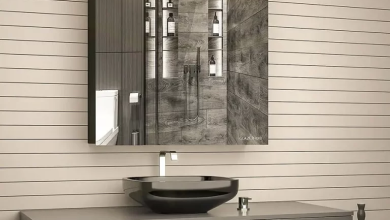What is smart home automation and why should you care?

Smart home automation allows you to control your home from afar by connecting your home’s devices together and setting up rules and patterns in order to perform certain actions automatically. Connecting devices and appliances together can seem intimidating at first, but with the right products and applications, it’s surprisingly easy to get started and only takes about an hour or so to set up your first few automated events. From there, you’ll be able to automate more and more of your home’s devices, saving yourself time while also making your life easier!
Home Automation: An Introduction
Home automation refers to the use of electronic devices like smartphones, tablets, or computers to control the environment in your home. The most common type of home automation is a thermostat that can be controlled with your smartphone. But there are also other types of smart technology that can be installed in your house, such as security cameras and automated lighting. Some people see their homes as places to live while others see them as investments; it’s up to you whether or not you want these technological features.
Smart Home Technology Overview
There are a number of different types of technology that can be considered smart. The most common type of technology in the home that’s being labeled as smart would be Wi-Fi enabled devices. Another type of device that falls under the category of smart would be household appliances with an app to control them. Yet another type of device that falls under the category for smart would be security systems like Nest. One more popular device that falls into this category would be your lights, like Phillips Hue.
All of these devices have the ability to connect to one another through your Wi-Fi connection, meaning that they all work together. You may have seen commercials on TV or heard people talking about how they can use their voice assistant (such as Siri or Alexa) and say things like turn off all my lights and it will turn off everything without having to go around the house flipping switches manually.
The Internet of Things (IoT)
The term Internet of Things (IoT) refers to the ever-growing number of devices that have the capability to connect to the internet. This includes everything from your computer, your smartphone, and even your refrigerator. When all these devices are connected through the IoT, we can collect data about what’s going on in our homes. For example, when a water sensor detects moisture in your basement, it will send an alert to your phone, which may prompt you to turn off all of the sprinklers in order for them not to leak into the basement any further. The possibilities are endless!
Types of Smart Home Technology
Smart homes have come a long way in recent years with the introduction of new technologies that have simplified our lives. These include everything from thermostats to lighting, appliance controls to security systems, and many more. The following is a list of some of the most common types of smart home technology:
Thermostat
A device that regulates the temperature in your house.
Security System
A system that monitors for signs of an intrusion or other danger within the house. This system can be armed or disarmed using an app on your smartphone. Smart homes can also utilize smart padlocks to increase security.
Lights
These are typically equipped with sensors to detect when someone enters or leaves the room and can be set to turn on automatically when it gets dark outside.
The Benefits of Home Automation
Home automation has been around for decades, but it’s only recently that the technology has become so affordable and easy to use. Automating your home can save you time and money while also reducing your environmental footprint.
Home automation systems can be controlled by a smartphone, tablet or computer – allowing you to control the lights, music, temperature, security cameras and more from anywhere in the world. It’s even possible to automate just one device with a voice assistant like Alexa, Siri or Google Assistant.
It may seem daunting at first, but installing a basic set up of devices is surprisingly simple and affordable these days. If you’re looking to start automating your home on a budget, consider purchasing individual components and setting them up manually. If you have some electrical knowledge or want to get an electrician involved early on, then going with a professionally installed system might make sense for you.
How to Automate Your House (with Amazon Alexa)
Automating your house can make your life easier. Instead of having to think about turning on the air conditioner or remembering to lock the door, your home will do it for you! Plus, it’s cool to be able to ask Alexa to turn on the lights in another room.
Alexa can also change the temperature on a thermostat so that no one has to remember how to set it. There are a lot of ways that people use their homes as well. Some people watch movies or play games, others might host parties or sleep at night.
One person could be cooking while someone else watches TV; everyone needs different things out of their homes at different times of day. If you want something done automatically without thinking about it, automate it with some sort of technology!
5 Tips for a Seamless Smart Home Setup with Alexa
If you’ve ever wanted to build a smart home, there’s no better time than now. Thanks to technology like Amazon Alexa and Google Assistant, it’s never been easier to set up your own smart home setup with these assistants as the primary interface between your tech devices and yourself. Here are five tips to help you make that transition as smoothly as possible, with the least amount of hiccups along the way. [ TAGS ]
1) Consider The Price
Just because you want to control everything in your home via voice doesn’t mean you need to break your budget. You can outfit a large number of devices (and even add smarts to older ones) on a shoestring budget. Our advice? Stick with Amazon’s Echo or Google’s Home—or go all out and opt for one of those branded smart hubs that gives you access to multiple platforms at once.
2) Buy the Right Things
What matters in smart-home tech is how it fits into your life, and that means picking smart devices you’ll actually use. Before investing in smart home gear, consider what you already own (think: Apple TV or Playstation) and whether there’s an existing device that can do something similar. Instead of buying a smart hub to control all your equipment—which can get pricey—maybe connect everything to your Amazon Echo instead.
3) Keep Track of the Equipment
The smart home market is flooded with devices, but before you begin shopping it’s important to take stock of what you already have. You may not realize it, but your current equipment can often be integrated into a smart home system. From lights to locks and speakers to thermostats, think about all of your options as you start planning your setup. Your smart hub will also likely have some automation options that tie in perfectly with what’s already installed at home – don’t forget these during setup!
4) Establish Routines
If you want to use an AI assistant like Amazon’s Alexa or Google Assistant to control your home, one of your first decisions is figuring out which voice command to use. The most obvious choice is Hey Siri (if you have an iPhone) or OK Google, but unfortunately, these are not great options because both Apple and Google require developers to set up phrases for each action their app supports—so an app might support multiple actions that each require their own unique phrase.
5) Create a Plan B
If you’re looking to make smart home upgrades, start by creating a basic plan for how your new devices will fit into your daily routine. For instance, if you have trouble falling asleep at night, you may want to install smart light bulbs in your bedroom that you can turn on and off via voice control. You can then set up an off command that automatically turns those lights off after 15 minutes or so.





